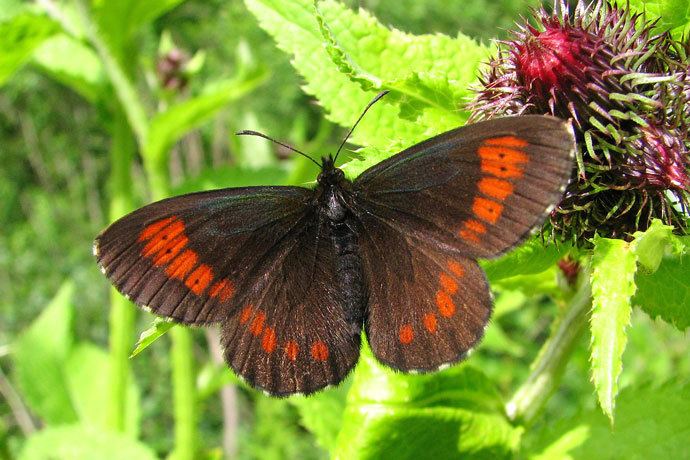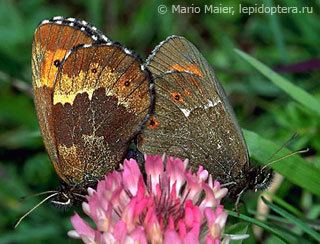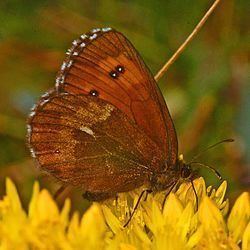Genus Erebia Rank Species | ||
 | ||
Similar Small mountain ringlet, Water ringlet, Erebia cassioides, Silky ringlet, Piedmont ringlet | ||
Erebia euryale large ringlet julio 2016 monta a oriental leonesa
Erebia euryale, common name large ringlet, is a species of butterflies belonging to the family Nymphalidae.
Contents
- Erebia euryale large ringlet julio 2016 monta a oriental leonesa
- Bergwald mohrenfalter erebia euryale larger ringlet
- Subspecies
- Distribution and habitat
- Description
- Biology
- References
Bergwald mohrenfalter erebia euryale larger ringlet
Subspecies
Subspecies include:
Distribution and habitat

This species is endemic to Europe. It can be found in Southern Europe, in the Alps, Cantabrian, Pyrenees, Carpathians, Balkans, in Northern Europe from Finland to the Urals and in Altai. Erebia euryale is an alpine species. It lives in spruce forest clearings, glades, slopes, subalpine meadows and damp meadows at an elevation of 500–2,600 metres (1,600–8,500 ft) above sea level.
Description

Erebia euryale has a wingspan of 20–23 mm. These butterflies have a considerable geographic variation. Usually the upperside of the forewings is dark brown with a reddish-orange postmedian band marked with three or four oval ocelli, with white pupils in the females, often blind or reduced to small dots in the males. All wings show chequered fringes. The forewings of the males do not show androconial area. The upperside of each hindwing usually has three eye spots surrounded by orange. The underside hindwings of the females shows a diffuse clear or whitish band, strongly dentate. The caterpillar and the chrysalis are pinkish-brown. This species is rather similar to Erebia ligea.
Biology

This species is univoltine. It overwinters a first year as an egg, a second year as a caterpillar. The eggs, pearly gray, hatch in the spring. Adults fly from June to September. They feed at mountain flowers, specially at yellow daisies. Caterpillars feed on various grasses (Anthoxanthum odoratum, Brachypodium sylvaticum, Deschampsia cespitosa, Festuca ovina, Festuca rubra, Festuca alpina, Poa nemoralis, Carex flacca, Digitaria, Milium, Carex and Sesleria species).


